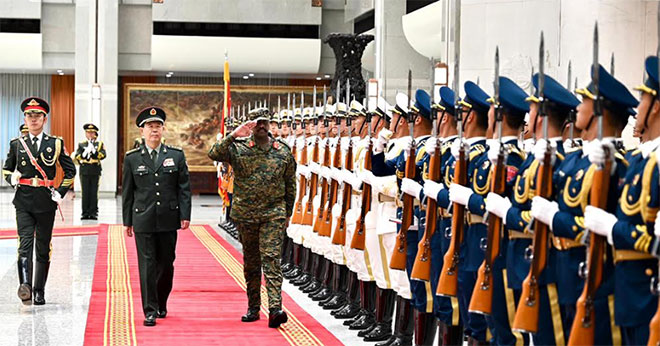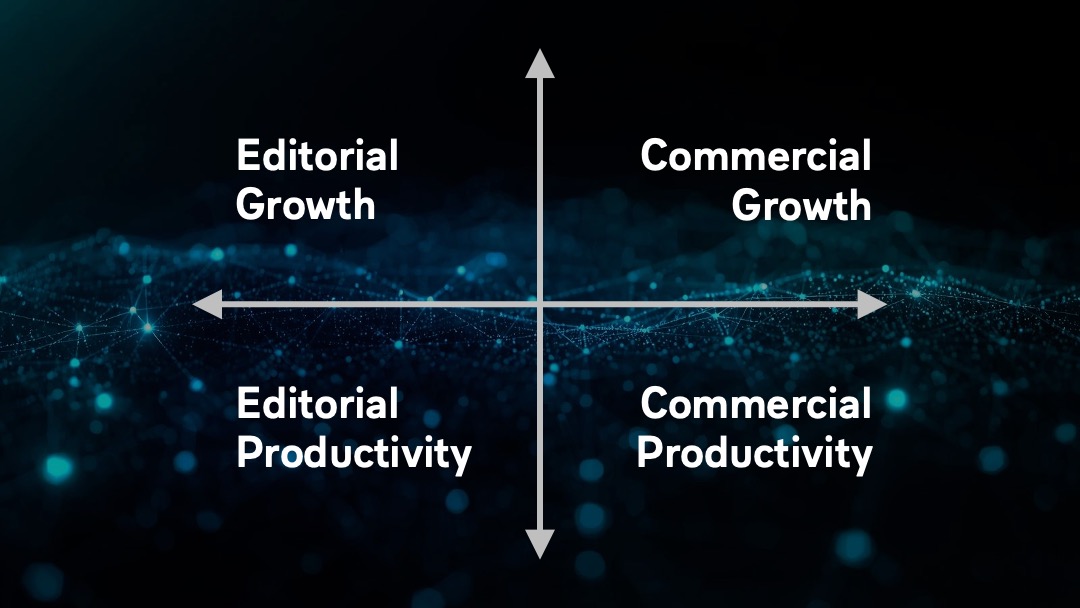By The Independent
Copyright independent

New report reveals how Beijing influences Uganda and other countries in thinking and action
NEWS ANALYSIS | RONALD MUSOKE | Today, the number of learners attending Mandarin classes at the Confucius Institute inside Makerere University, Uganda’s premier institution of higher learning, is growing. Many see mastery of the Chinese dialect as a route to landing a job at the mushrooming Chinese investments in the country.
This is not accidental. It is the product of China’s many decades of deliberate and patient weaving of a relationship with Uganda. Think of a spider at work. The strands may be thin at first; an academic partnership here, an expressway or stadium investment there. Over time, the web has thickened. Interestingly, China’s web of networks now stretches across continents.
The Mandarin class at Makerere University mirrors the fixation with TikTok videos filmed in Brazil’s tech hub of São Paulo which are quietly riding on algorithms shaped in part by Chinese tech companies. Even at the United Nations in New York, when diplomats haggle over a particular wording in a resolution, Chinese phrasing is often heard. Meanwhile, a festival in Brussels, the European Union capital, features dragon dances and lanterns, co-sponsored by the Chinese embassy there.
Taken separately, each event seems like a minor occurrence. Together, they reveal a bigger story: China is everywhere. Not in the way the United States once was, with aircraft carriers and Hollywood blockbuster movies dominating global landscapes, but in quieter ways, through technology, commerce, diplomacy, and cultural festivals. However, if one wants to know where China’s global charm offensive is landing with particular weight, they need to look no further than Uganda.
Measuring China’s influence
The most comprehensive attempt yet to measure Beijing’s ever-growing global footprint is by the China Index published by China in The World (CITW) network in partnership with the Taiwan-based non-profit, Doublethink Lab, a civil society organisation devoted to studying the influence of digital authoritarianism.
First launched in 2019, the China Index 2024 systematically compares Chinese influence across countries, collecting data to create a comparative geographical analysis. It is promoted as a tool for societies to monitor ties with China, uncover influence, and advocate for “responsible bilateral relations.”
Its latest report published on Sept. 10 notes Sub-Saharan Africa as the fastest-growing region for Chinese influence globally, driven not just by roads and railways but also by digital systems, military training, and clever diplomacy.
On the index, Uganda ranks 25th out of 101 countries surveyed for Beijing’s influence. When one zooms in on Africa, Uganda sits firmly in the ninth position. And once you start following the threads, it’s easy to see why. The friendship between Kampala and Beijing is not exactly new, but lately, it’s getting warmer, more strategic and more visible.
At the ruling National Resistance Movement’s (NRM) National Delegates’ Conference held in Kampala, this August, the party Secretary General, Richard Todwong, heaped praise on the Communist Party of China (CPC)– one of the invited “comrade political organisations” at the event– referring to the bond between the two political machines as “strategic and historic.”
The CPC, in turn, has been sending delegations to Uganda, exploring everything from “capacity building” to cadre training. In September last year, Todwong led senior NRM officials to a governance academy in Gansu, China, returning with “lessons” he said Uganda could adopt from the CPC’s “cadreship education system.” This September, Gen. Muhoozi Kainerugaba, the Chief of Defence Forces of Uganda’s national army (the UPDF) has just led a high-profile military delegation to China where he reportedly signed a new bilateral agreement with his counterpart, Gen. Liu Zhenli, and also visited the headquarters of China’s leading Defence Contractor, China North Industries Corporation Ltd (NORINCO).
But, it isn’t just political party-to-party and military ties. China has sunk millions into Uganda’s physical and digital infrastructure development. About US$110 million has reportedly gone into building the country’s fibre-optic network and Huawei, China’s telecoms giant, has been a star player in installing new surveillance-heavy tech.
Uganda’s streets now bristle with Chinese-made surveillance cameras, some boasting facial recognition, sold as tools for law and order—but also raising fears about privacy and creeping digital authoritarianism under the so-called “safe city” programmes installed in at least eight African countries. Yet digitalization is perhaps China’s most underappreciated channel of influence. By 2024, 65% of countries surveyed reported Chinese-linked entities owned or controlled at least one of their top five apps, up from 45% in 2022. TikTok is now shaping global pop culture and politics while WeChat is indispensable across Africa and Asia with Huawei-built networks underpinning communications. The Chinese technology gives governments like Uganda’s more leeway to suppress dissent and erode hard-won democratic freedoms.
A 2023 study by the Collaboration on International ICT Policy for East and Southern Africa (CIPESA), a Kampala-based civic-tech organisation, corroborates the latest China Index report. It also noted that Uganda is “mirroring” practices promoted by Beijing that chip away at digital rights, free expression, and privacy.
The appeal for Kampala is straightforward: Cozying up to Beijing often comes with Chinese money. The absence of lectures about democracy or human rights in exchange for loans is a bonus. It stands in sharp contrast with Western development partners like the U.S., U.K., and the World Bank, who in 2023 and 2024 slapped sanctions on Ugandan officials over governance and human rights issues. President Yoweri Museveni likes to praise Beijing’s “non-interference” policy.
At the inter-continental level, the Forum on China-Africa Cooperation (FOCAC) has become Beijing’s main stage for exporting its governance model. On the international stage, Uganda has joined the ranks of countries backing Beijing on contentious issues such as the status of Taiwan and human rights debates at the UN. That’s exactly the kind of political payoff China hopes for, as it seeks to shape global rules and institutions. And they make Uganda something of a textbook case of Beijing’s wider strategy across Africa.
What the Index reveals
The latest China Index 2024 analysed Beijing’s influence across 101 countries. Two-thirds of countries under review recorded higher levels in 2024 than in 2022. The Index looks at nine domains: academia, domestic politics, economy, foreign policy, law enforcement, media, military, society, and technology.
Technology and foreign policy top the list worldwide, with average scores of 42.5 and 50.1 out of 100. Global South countries such as Uganda report much higher levels of Chinese influence than those in the Global North—34.3 percentage points higher in foreign policy and 15 points higher in technology.
The “society” domain saw the biggest jump, rising 12.6 points on average. Diaspora-linked cultural events tied to Chinese diplomats or the United Front Work Department (a department of the CCP) were recorded in 73 countries in 2024—nearly double the share in 2022.
“This is the first time we can systematically compare Chinese influence across countries and over time,” said Doublethink Lab’s Deputy CEO, Tim Nivan. “The data not only shows where vulnerabilities are deepening, but also where societies are proving resilient.”
Providing perspective, Ja-Ian Chong of the National University of Singapore noted: “The PRC (China) has been trying to expand on their international outreach and shaping an environment that is conducive to their interests as a major global actor.”
“Ethnic Chinese networks, business networks, and cultural activity are some of the tools available to the Chinese state and the CCP’s UFWD. This pattern of behaviour is not necessarily problematic, but host states should pay attention to where their domestic interests and cleavages may intersect with China and CCP activity so as to better safeguard themselves.”
At the top of the rankings, the countries remain unchanged from 2022. Pakistan leads, followed by Cambodia and Singapore. On the other end, Ukraine and Italy have seen sharp declines in influence, with Ukraine plummeting from 44th to 89th.
Festivals, films, and food fairs
The Index highlights one domain in particular where Chinese influence has ballooned: Society. For instance, between 2022 and 2024, this domain saw the largest average increase of any category — a whopping 12.6 points. In 2022, just 30 out of 80 countries reported organized social activities linked to Beijing. By 2024, that figure nearly doubled to 73 out of 101 countries, thanks to Chinese New Year parades in European capitals, cultural festivals in African cities and food fairs, film screenings, and Mandarin competitions across Latin America.
On the surface, experts say, these events are harmless or even fun. Who doesn’t like dumplings, dragon dances, or a martial arts demonstration? But, others say, these activities also normalise China’s presence and subtly promote its narratives. They build goodwill at relatively little cost. Think of it this way; a new port might cost billions of dollars. A festival costs thousands of dollars. But both can tie people closer to Beijing, just in different ways.
Democratic norms under pressure
The rise in Chinese influence is less about sudden conquest and more about steady momentum, the report notes. While Europe and North America are busy building barriers, much of the Global South, Africa in particular, is embracing Beijing.
Beijing’s global influence has deepened in ways that are challenging democratic norms and regional decision-making, according to experts who have analyzed the latest China Index. In Southeast Asia, Beijing has been able to stymie the Association of South East Asian Nations’ (ASEAN) collective decision-making on security issues, Bradley Jensen Murg of Paragon International University in Cambodia said during the report dissemination webinar on Sept. 10. Cambodia and Laos, he noted, have become reliable veto players, giving Beijing leverage on divisive questions such as the South China Sea.
Amanda Strydom of Code for Africa, the continent’s largest network of civic technology and data journalism labs, pointed to Chinese control of nearly a third of Africa’s ports, heavy investment in digital infrastructure, and expansion of surveillance technology. The risk, she said, is erosion of privacy and independent media unless stronger safeguards are adopted.
China’s strategy also involves cultural outreach. Confucius Institutes dot university campuses, scholarships bring African students to Chinese universities, and festivals showcase Chinese culture. Similar strategies are on in Central America and the Caribbean, international relations consultant Hernan Alberro says. In short, Beijing isn’t just building roads. It is building relationships.
However, there are some exceptions. In India, for example, since the deadly Galwan Valley clash in 2020, New Delhi has sharply restricted Chinese investment and banned hundreds of Chinese apps.
“One needs to understand that relying too much on China has not been beneficial,” said Sriparna Pathak of O.P. Jindal University. Pathak says India’s push for domestic manufacturing and supply-chain diversification has curbed Beijing’s reach — offering lessons in resilience for other countries.
Global North pushes back
The China Index 2024 shows that as Beijing’s appeal in the Global South grows, the Global North countries are pushing back. The U.S. and Canada have barred Huawei. The U.K. government has recently threatened to shut down Confucius Institutes while Germany has debated “de-risking.” The EU has rallied behind Lithuania after Beijing retaliated against its Taiwan stance. The result is a fragmented world: one bloc integrating more deeply with China, the other disentangling.
Three layers of influence
The Index categorizes China’s influence into three layers; exposure (connection building), pressure (coercion and threats), and alignment (diplomatic outcomes). Exposure has to do with the connections through trade flows, student exchanges, technology deals. Pressure involves hard-edged tactics like sanctions, boycotts, and diplomatic scoldings while alignment focuses on the endgame; the actual policy outcomes favourable to Beijing.
The latest data shows a clear positive correlation between exposure and alignment, suggesting that countries are more likely to support Beijing’s preferred positions when engagement is built through connections rather than coercion. When it comes to falling in line (alignment) with Beijing’s interests (as measured by observable policy and diplomatic outcomes), Uganda ranks 7th in the world.
Matej Šimalčík, the Executive Director of the Central European Institute of Asian Studies and China Index’s regional partner for several European countries notes that “this correlation underscores the need for greater transparency around influence activities; for example, ensuring politicians and journalists recognize the propaganda purpose of CCP-sponsored trips.”
According to the experts who analysed the Index, it appears exposure works and pressure doesn’t. Apparently, countries with higher exposure are more likely to align with Beijing’s preferences while those subjected to pressure, the so-called “wolf warrior” diplomacy, often stiffen their resistance.
Alongside the three layers, the Index also groups influence into three clusters where China invests its resources: ideology, dependence and rule-making. Ideology shapes minds through academia, media, and society. The dependence track seeks to create reliance on China through the economy, technology, and domestic politics while, in rule-making, Beijing seeks to reshape norms via military, law enforcement, and foreign policy. Uganda’s engagement with Chinese cadre training, its adoption of Huawei surveillance tech, and its pro-Beijing votes at the UN reflect the effectiveness of China’s three-step playbook.
Regional variations
According to the Index, Chinese influence starts right in its backyard, Asia, where it is strongest. The regional Association of Southeast Asian Nations (ASEAN) has counted China as its largest trading partner for 14 straight years.
In Europe, Italy and Ukraine illustrate how influence can slip. Rome, for instance, joined the Belt and Road Initiative in 2019 but exited by 2023, disappointed with meagre returns. Ukraine’s relationship collapsed after Russia’s invasion and China’s perceived tilt toward Moscow.
In the Americas, Latin America has welcomed Chinese investment, often switching diplomatic recognition from Taiwan. In North America, suspicion dominates, with Huawei banned and TikTok scrutinized.
What it all means
The China Index 2024 reveals a world being quietly rewired as China recalibrates. The wolf warrior style that made headlines a few years ago — fiery press conferences, diplomatic threats — is giving way to subtler, softer approaches: festivals, cultural diplomacy, digital platforms, and infrastructure deals. Think less roar, more whisper. Less hammer, more silk thread.
Some strands are thick and visible — ports, highways, power plants. Others are nearly invisible — apps, festivals, exchanges. But together, they bind. The big question isn’t whether China will keep weaving. It will. The question is how countries will navigate the web.
For Uganda, as for many others, the task is balancing opportunity against risk. Will China’s embrace propel development or entrench Uganda’s ruling NRM party’s 40-year rule? The Index does not answer that. But it does offer a map. And if you want to understand the future of global politics, that map is as important as any you will see.



